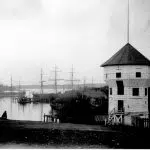
B.C. First Nations seek action on sturgeon deaths, after court blamed declines on dam
VANCOUVER — Three British Columbia First Nations want the provincial and federal governments to live up to a nine-month-old court decision that said there is “overwhelming” evidence a dam on the Nechako River is killing endangered sturgeon.
They are highlighting the ruling after scientists asked the public in September for help in solving the mysterious deaths of 11 adult sturgeon found in the Nechako River in central B.C.
The Ministry of Land, Water and Resource Stewardship said the fish showed no visible external injuries and their deaths were not caused by disease, chemical exposure, angling or gillnet fisheries.
However, the Nechako First Nations claim mismanagement of the river and the dam reservoir are behind the deaths, saying quick action is needed to protect their rights and the sturgeon, which the court said were in “a decline so severe that the species is currently at risk of imminent extirpation.”


